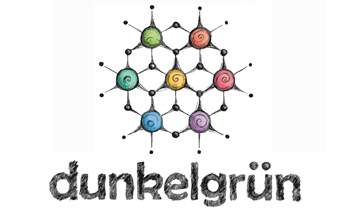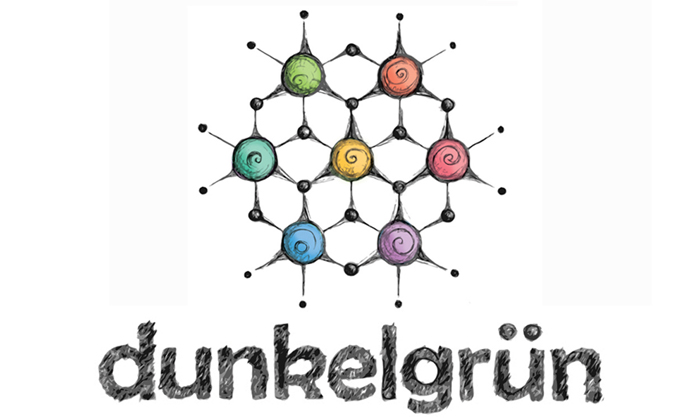Happy New Year 2018! I am happy to start 2018 with a new podcast episode full of crafting projects I love.
There is a new cardigan, some selbu mittens, spinning and a new craft: embroidery!
#SELFdyedKAL
This KAL is cohosted by the amazing MarinaToys and myself!
Check out Marina’s Podcast here.
In this KAL we are going to work on projects for which we dyed the yarn ourselves.
No matter whether you’re an experienced indie dyer or very new with the whole dyeing adventure – just knit something out of your own handdyed yarn (or your own handdyed and handspun fiber).
You are free to use any kind of dyes: acid dyes, natural dyes, food coloring, easter egg color, kool aid… any dye that works!
Time Frame
October 1st 2017 — TBD (sometime in spring 2018)
All further information on this KAL can be found here in the ravelry thread!
Finished Projects
Gabriel’s Ninja Mask
- Pattern: Incorporating elements from Trav’s Balaclava (by Jacki Kelly) and Easy Balaclava (by Nanette Blanchard)
- Yarn: Malabrigo Rios in colorway Tormenta (worsted weight yarn)
- Needles: US 4 – 3.5 mm
- After I had knit the mask, the neck part was a bit too short (even though I knitted it a bit longer than the patterns called for). So I cast on the same number of stitches and knitted until I almost ran out of yarn (letting a long tail). Using the kitchener stitch I grafted this piece to the cast on edge.
Now it is long enough and I have literally used up every little bit of the skein.
Shetland Ramona
- Pattern: Ramona Cardigan by Elizabeth Smith
- Yarn: Jamieson’s of Shetland Shetland Heather, colorway North Sea
- Needles: US 7 – 4.5 mm (main part), US 4 – 3.5 mm (ribbing)
- My favorite cardigan ever! Check out my ravelry project page for a description of all the modifications I did.
Knitting in Progress
Selbu Mittens
- Pattern: Selbu Mittens by Skeindeer Knits
- Yarn: Jamieson’s of Shetland Shetland Heather, colorways North Sea and Ivory
- Needles: US 6 – 4.0 mm (colorwork), US 2½ – 3.0 mm (ribbing)
Spinning
I am spinning 100% Blue Faced Leicester (BFL) in a natural color on my Ashford traditional spinning wheel. My goal is to achieve a DK to worsted weight in order to knit the Telja sweater by Jennifer Steingass out of the yarn.
Acquisitions
- indigo project bag from LAMIprojects (etsy shop)
- needle felted stitch markers from BehindTheSheep (etsy shop)
- embroidery kit from TamarNahirYanai (etsy shop)
Science Segment
In this episode’s science segment it’s all about the structure of wool fibers and what happens to them during the superwash treatment.
Wool fibers have a very complex nanostructure. Basically they are composed of a hydrophilic (water-loving) core and a hydrophobic (water-repelling) outer layer. The outer surface is structured with scales similar to a fish or the bark of certain trees. This combination of water-loving and water-repelling components is responsible for some unique properties of wool. For example, the fact that wool is able to take up 30% of its weight in moisture without feeling wet to the touch. Also, wool is able to transport moisture through it’s hydrophilic core, which we often call “breathability”: Sweat is transported to the outside. At the same time the hydrophobic, scaly surface is water resistant and can protect us from getting wet in the rain.
The scales on the surface are also responsible for wool’s property to felt, when it is heated and agitated, or during sudden temperature changes. That’s why wool is not machine-washable.
The “traditional” superwash treatment is called Hercosett treatment, and it is used since the early 1970ies to increase the washability of wool. In this process, chlorinated chemicals are used to chemically “shave” the fiber and remove the scales on the surface. Afterwards the fiber is coated with a synthetic polymer resin to give it a smooth surface. While this makes the wool machine washable, many of the wonderful properties of natural wool are lost. Additionally, the chemicals used in the process are very harmful for the environment, that’s why modern chemical processes aim at avoiding them completely.
So are there any alternatives? Yes, there are alternative processes to increase the washability of wool, which are more environmentally friendly and manage to retain most of its natural properties. These processes are bluesign certified – a certificate which guarantees that no harmful chemicals (such as the chlorinated compounds in the Hercosett treatment) are employed.
Two pioneering companies in bluesign certified superwash yarns are: schoeller wool and the südwolle group. (This list is not exclusive – there might be others.)
There is also an interesting blog post at loveknitting.com, with information on bluesign-certified schoeller and austermann yarns.






